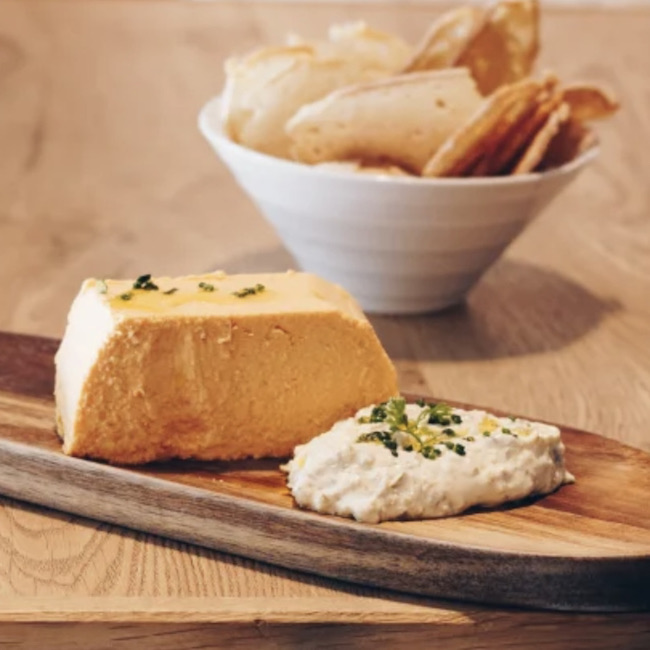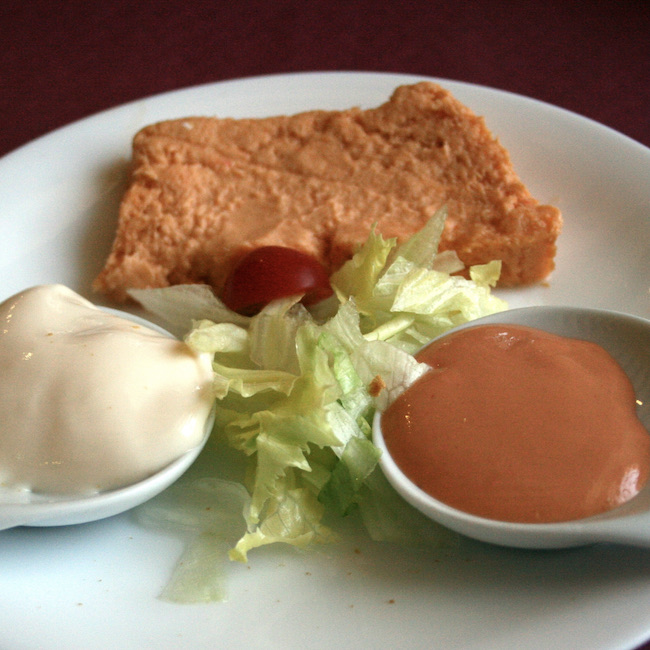.png.transform/rendition-xs/image_image%20(1).png)
Fish Cakes: the Sensuality of the Sea on a Plate
The great Spanish chefs of the 20th century discovered the pleasure of flaking hake and scorpionfish to create unctuous, delicious pâtés that continue to be wildly popular
This story has a timeline. It all started in 1933, when the Marquise of Parabère published a recipe for hake pudding in her very famous cookbook The Complete Kitchen, which turned out to be very influential for decades to come. The dish offered a refined way of eating fish and, thanks to the use of other ingredients such as eggs and milk, it was transformed into an attractive, easy-to-share recipe—ideal for the holiday season.
The Marquise of Parabère's religion-inspired fish pie endured for decades as a festive way to enjoy fish. Another format with a different texture. In 1971, a young (at the time) chef named Juan Mari Arzak decided, in his native San Sebastian, to give a twist to this hake pie that was still being served in homes and in some of the older restaurants in the Basque city. His version, whose popularity has exceeded the first one that appeared in that cookbook, switched the hake for a rockfish: scorpionfish or kabrarroca, two of the names for which it's known in the Basque Country.
Arzak decided to use a fish that, on the one hand, provides a more powerful flavor compared with a white fish such as hake and, on the other, requires patience and precision from the cook: it's a fish that is unattractive and, above all, full of bones. The instructions are as follows: once the flesh of the fish is removed, it's cooked and mixed with cream, egg yolks, spices, and tomato sauce, which gives it its characteristic color (many think that scorpionfish has this powerful color naturally...).
Arzak started serving that fish cake as an appetizer in his restaurant and, seeing its success, he decided to make it a fixture on his menu, one of the symbols of new Basque cuisine, and a part of the trajectory of this living legend in Spanish gastronomy which still boasts 3 Michelin stars.

A popular dish for sharing
Until today. His creativity also changed the history of the scorpionfish forever: it went from being a rockfish, not especially appreciated, with a minor role compared with the main ingredients to part of a cake that became not only a classic during celebrations like Christmas, but also a mainstay on bar and restaurant menus throughout the Cantabrian coast.
Today, it's easy to find it in locales in the Basque Country, Cantabria, and Asturias. It's usually served with mayonnaise or cocktail sauce. It's also served with shredded lettuce and is usually spread on square-shaped rusks.
Spanish society has been adapting it to the changing times and to the fish available throughout the year: from scorpionfish and hake to sardines, although it could also be made with salmon and even with shrimp. What hasn't changed is its iconic status as an appetizer, always perfect for sharing with friends.

Never mind the bones: here are these ready to eat versions!
A dish like this, which is difficult to prepare because of the bones (and also because of the availability of rockfish, although we've already seen that this has a solution) has led many companies to launch their prêt-à-porter versions. One of them is Santa Teresa Gourmet, which began by making the yolks of Ávila after which the brand is named (an emblem of the city); today it makes all kinds of dishes. That includes a rockfish pie that encapsulates all the flavor of Arzak's recipe.
And they're not the only ones. Other brands such as Laurel and Tierra Astur also have their own version of this delicacy. There are companies such as Basque Xumuxua which uses other fish instead of rockfish, like hake and prawns. The fish pie made in Spain is always a hit!
When it comes to pairings, the best options can be traced back to the dish's origins. As a good symbol of Basque cuisine, there are two beverages that go perfectly with it. There's txakoli, that sharp white wine with good acidity, ideal for cleansing the palate after each bite of this unctuous dish. Cider also works perfectly while also refreshing the palate. Heading west, we have to modify our options ever so slightly: wines made with white Albarín grapes in Asturias have a profile that fits the personality of the dish. And, once again, natural cider from Asturias works wonderfully with this recipe which, whether it's made with hake or rockfish, has never lost its festive character but has managed to work its way from age-old recipe books and haute cuisine into popular, mainstream cuisine.

